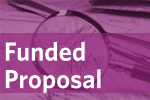
Anand Parikh, general counsel and head of business development at Virta Health, talks about treating diabetes with virtual real-time assessment.…Read More

Anand Parikh, general counsel and head of business development at Virta Health, talks about treating diabetes with virtual real-time assessment.…Read More

Tanvi Kapur, Ishir Seth, and WenTao Zhang discuss their plan to prevent catheter-associated infections in hospital patients.…Read More

Dr. Robert Graboyes of George Mason University explains how future innovations in medicine will lower costs by empowering machines, nurses, and even patients to perform functions that only doctors can do today.…Read More

Joel Marcus, Executive Chairman and Founder of Alexandria Real Estate Equities, and Liz O’Day, CEO and Founder of Olaris Therapeutics, discuss how collaboration across stakeholders can enhance innovation in the life sciences.…Read More

Dr. Michael Jaff, President of Newton-Wellesley Hospital, shares the novel strategies his institution has used to solicit feedback and continuously improve the patient experience.…Read More

Accreditation of providers helps resolve the pervasive information asymmetries in health care markets. However, meeting accreditation standards typically involves flexibility in implementation, leading to heterogeneity in performance. …Read More

This study of new technologies in elder care is a multi-faceted project designed to better understand technological adoption both by elder-care institutions such as Continuing Care Retirement Communities (CCRCs) and elderly individuals in their homes. …Read More

The business model of Pharmacy Benefit Managers (PBMs) has evolved dramatically over the last few decades from basic insurance claims processors to becoming one of the key drivers of pharmaceutical pricing and utilization in the U.S. PBMs are the “middlemen” between insurers and drug manufacturers.…Read More

Wade Chambers of Grand Rounds discussed how data science can positively influence a patient’s medical outcomes by optimizing services for them.…Read More

Trey Lauderdale, CEO and Founder of clinical communications platform Voalte, shared how the smartphone is finally finding a place in the healthcare industry.…Read More

The Patient-Centered Medical Home (PCMH) is a widely-implemented model for improving primary care, emphasizing care coordination, information technology, and process improvements. However, its treatment as an undifferentiated intervention obscures meaningful variation in implementation. …Read More

Sheila Talton, President & CEO of Gray Matter Analytics, explains how to address inefficiencies that drive up costs in the U.S. healthcare system.…Read More

Interdisciplinary student teams applied design thinking to improve patient engagement with Penn’s personalized healthcare management site, MyPennMedicine.…Read More

Arik Anderson, CEO of Adherium, explains how better quality of life and better healthcare economics go hand in hand.…Read More

Secure messaging, or “e-visits,” between patients and providers has sharply increased in recent years, and many hope they will help improve healthcare quality, while increasing provider capacity. Using a panel data set from a large healthcare system in the United States, we find that e-visits trigger about 6% more office visits, with mixed results on phone visits and patient health.…Read More

Robert Boland (WG’13) explains how J&J applies external and internal data to build lasting connections with patients.…Read More

Mack Institute co-director Christian Terwiesch has co-authored two new studies related to technology and health care. The first, which examined the impact of e-visits on primary care, found some surprisingly negative results about connectivity.…Read More

In this project, I am continuing to use the empirical context of the evolution of cardiac surgery regulation in New York State to understand the challenges involved using empirically-documented social science findings into public policy. …Read More

Wharton Grad Emily Pell talks about how Penn prepared her for a career in innovation management, and the opportunities for healthcare innovation in her current role.…Read More

Penn’s 2017 Y-Prize winner proposed using ultrathin aluminum oxide implants to release eye pressure that leads to irreversible optic nerve damage.…Read More